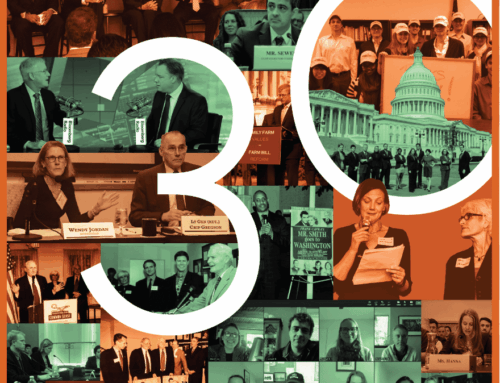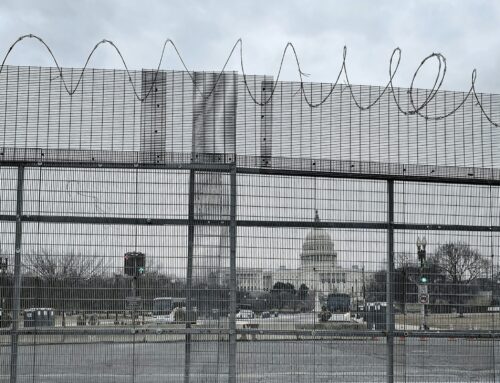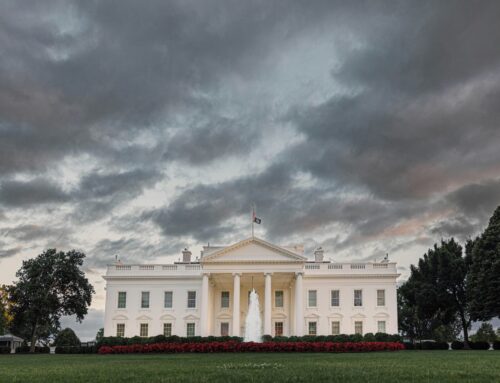It’s Friday the 13th and scary things are happening in the Pentagon budget. With Congress returning from a long August recess this week, the prospect of a messy spending fight and a potential government shutdown ahead of a pivotal election cycle was top of mind. But in the depths of the Pentagon spending bills for each chamber, lawmakers on both sides of the aisle appeared more than happy with their work over the summer to advance 1,500 “program increases” for the Pentagon’s Procurement and Research, Development, Test, and Evaluation (RDT&E) accounts. The cost? More than $39 billion. We’ve catalogued these increases in our freshly updated database of congressional additions to the Pentagon budget.
Over a dozen House and Senate appropriators have taken credit for various program increases to these accounts in press releases, some of which even name the companies that will receive the contracts for these parochial additions. We didn’t have to look very hard to find examples of lawmakers on both sides of the aisle taking credit for program increases that will benefit their campaign contributors, which you can read about in our longer analysis of the new data here.
While specific examples of questionable program increases may raise eyebrows, the upward trend in the total number and cost of increases to the Pentagon budget is even more concerning. Last year, lawmakers proposed a combined 1,216 program increases for Procurement and RDT&E in the House and Senate versions of the Defense Appropriations Act (which was pared down to 1,072 in the final bill largely due to duplicative increases). This year, they’ve proposed 1,437, not counting 63 increases characterized as emergency funding. That’s an 18 percent jump—23 percent when you include emergency increases. The overall cost of Procurement and RDT&E program increases also grew by 5 percent excluding emergency funding. When you add in emergency funds, it grew by 52 percent.
We also found that 1,083 increases of the total 1,500 were for projects the Pentagon didn’t fund at all in its budget request. These Zero to Hero increases, as we call them, accounted for 72 percent of the total number of increases, and 36 percent of their total cost, over $14 billion. That’s a lot of money for projects the Pentagon couldn’t find any room for in its $850 billion budget request.
The data also shows 34 increases for Procurement and RDT&E that appear to respond to so-called “unfunded priorities lists,” extrabudgetary wish lists Congress requires each year from military service chiefs and combatant commanders. Those came to 2.3 percent of the total number of increases, but 13 percent of the cost, some $5 billion.
Then there’s the “emergency” increases, or at least the increases lawmakers are characterizing as “emergency” to circumvent budget caps—63 adds at a cost of over $12 billion. That’s 4.2 percent of the total number of Procurement and RDT&E increases, and over 30 percent of the total cost. Remarkably, sixteen of those additions were for RDT&E, including one $500 million addition for the Navy’s sixth-generation fighter, which won’t be fielded until the 2030’s at the earliest. In what universe is that an emergency? We’re not sure.
By Congress’s definition program increases aren’t earmarks, but they function similarly. Earmarks, now called Congressionally Directed Spending in the Senate and Community Project Funding in the House, allow lawmakers to target funds for specific projects in their states or districts. To discourage conflicts of interest, Congress requires the sponsors of earmarks to list their requests for earmarks on their websites, among other transparency and accountability measures.
In contrast, all it requires of program increases, at least in the Senate, is that they “be competitively awarded, or provided to programs that have received competitive awards in the past.” The bit about having received competitive awards in the past is particularly troublesome, because it allows lawmakers to target funds to specific companies in their states and districts without ever having to disclose their role in securing those funds, so long as those programs received competitive awards in the past. In the broadest reading of the requirement, lawmakers are in the clear as long as the broader program the increase is funding has received competitive awards in the past, even if the specific project receiving funds within that program has never been competitively awarded. But even a more conservative reading, in which the requirement applies to the specific project in question, still leaves room for lawmakers to anonymously fund projects for specific companies. It also bears noting that many “competitive” contract solicitations only receive bids from one company.
Given the upward trends in the number and cost of these increases, and specific examples of lawmakers targeting funds for their states, districts, and campaign contributors, Congress should act urgently to address the glaring lack of transparency and accountability surrounding this practice. We recommend Congress at a minimum require sponsors of program increases to list their proposed increases on their websites, offer justifications and long-term cost assessments, and report back on which companies receive rewards for their proposed increases. If lawmakers want to add tens of billions of dollars to the Pentagon budget every year, often by cutting funds for priorities included in the Pentagon’s budget request, taxpayers deserve to know which lawmakers are proposing these increases and why.
This post has been updated to account for one program increase that was erroneously excluded from our previous calculations on the number and cost of program increases.










